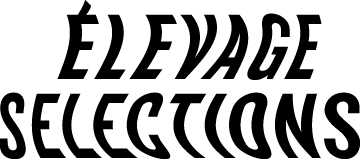Domaine Chenu
Savigny-les-Beaune, Burgundy , France
For 5 generations the Chenu family has been farming vines in Savigny Les Beaune. Vines were first purchased in 1914 by Louis Chenu and today the domaine is run his great grandchildren, sisters Caroline and Juliette. They took over from their father Louis in the early 2000s and began to bottle wines under their own name. Before this everything was sold to large Burgundy negociants. Today Domaine Chenu has 9 hectares all close by to the winery in Savigny Les Beaune.
After the sisters took over they converted to Organic farming and started reducing yields drastically. They introduced practices like de-budding, green harvesting and leaf thinning in order to raise the quality of the fruit. The style of the Domaine's wines are like what was once typical of Savigny: light, elegant, fruit forward and mineral laden. There are no heavy punch downs or hot temperatures for extraction. Now because of a warming climate, the style of the village is changing to become richer and more textured, but the Chenu family is dedicated to their elegant style and strives to make lighter wines.
Reds are destemmed crushed and cold macerated with light foot stomping then slowly brought up to temperature so natural fermentations can begin. Macerations are around 1 to 2 weeks depending on the wines. Aging is done in barrels for 18 months before release.
Whites contain around 10% Pinot Blanc and 90% Chardonnay, as was done in the old days. The Chenu sisters intend to maintain this practice and plant a little bit of Pinot Blanc in the Chardonnay vineyards as the years go by. White fruit is direct pressed, settled and sent to barrel. Aging is for 12 months.
The village: Almost all Savigny-les-Beaune wines are red, being neither as elegant as its neighbor Volnay nor as powerful and dark as its neighbor Pommard. Seeing the close proximity of these two famous villages, the wines of Savigny are able to fly under the radar and offer up excellent value. Savigny typically doesn't produced rich, full wines and has been historically unpopular for this reason. Only about 5 percent of the appellation's wines are white.
Savigny's is located in a sub-valley formed by the Rhoin river, which flows just to the south of the village and separates the appellation into 2 halves. This valley contains many south-facing slopes, where most of the 1er crus are. As it drops gently down to the east, the valley opens out onto the plain below, which is primarily for Bourgogne Village appellation and some lieu-dits. Just to the north and west are the hillsides of Battois and Corton, home to some of the finest vineyards of the entire region.
Bourgogne Rouge:
From 7 different sites surrounding Savigny with an average vine age of over 40 years.
Savigny-lès-Beaune 1er cru Rouge "Les Talmettes"
Sandy marls soil at the base of the vineyard and the upper part has iron-rich limestone. A site that produces delicate, red fruited and aromatic wines. Fantastic with age.
Savigny-lès-Beaune 1er cru Rouge "Les Lavières"
Lavières (lava) takes its name from a thin layer of volcanic soil in the vineyard over clay. This is a site that has long been expected to be converted to Grand Cru status as it has produced excellent, distinct wines for many years. These wines are typically much more savoury, smoky and mineral than the other wines, though with the Chenu touch of lightness and elegance.
Bourgogne Blanc Aligoté:
From a mixture of parcels vine ages on limestone soils.
Bourgogne Blanc “Les Bruchots”
From a 30-year-old, north facing parcel near the Hautes Côtes de Beaune, at higher elevation. Clay-limestone soils
Savigny-lès-Beaune Blanc "Les Saucours"
Only 5% of the Savigny vineyards are planted with white fruit as the limestone rich soils are better for reds. "Les Secours" is dominated by marl, which is fantastic for Chardonnay. This vineyard is 10% Pinot Blanc.
Retail
Ellement Wines & Spirits
Boutique del Vino
Kenaston Wine Market
Winehouse
Calabria Market
